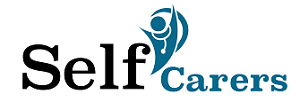A person living with HIV (PvHIV), on well-conducted antiretroviral treatment, has a viral load, that is to say a number of circulating viruses, undetectable on examinations. However, viral load is correlated with the rate of transmission of the virus. This means that a person treated effectively has almost no risk of transmitting HIV.
When to Get Tested For HIV
Following risk-taking or a doubt:
- Unprotected sex,
- Slipping or breaking of the condom,
- Sharing a syringe or injection equipment
Current tests, called combined tests of 4th generation, detect HIV from the 15th day after the risk. In the event of a negative result, a second test, carried out 6 weeks after the risk situation, makes it possible to certify the non-contamination.
In the event of a positive result, a confirmation test, immune-blot or western blot, is performed. Within 48 hours of taking the risk, it is possible to benefit from post-exposure treatment (TPE). Go to a hospital emergency department as quickly as possible, where a doctor will assess the risk with the person and possibly prescribe antiretroviral therapy to prevent HIV from spreading if it has been infected. Using the chlamydia test kit canada is essential now under the circumstances.
Decryption: Post-exposure HIV treatment
In the following situations
- In a stable couple, to stop using the condom,
- In case of desire for a child or a confirmed pregnancy,
- If a sexually transmitted infection is diagnosed,
- In case of diagnosis of viral hepatitis,
- In the event of changes in emotional life: breakup, separation, divorce …
Regular Screening
Regular HIV testing, at least annually, is recommended:
- For men who have sex with men (MSM),
- For people, homo- or heterosexual, having multiple sexual partners,
- For people coming from regions of the world where HIV infection is frequent (the French departments of America, sub-Saharan Africa, Eastern Europe, the Caribbean),
- For injecting drug users,
- For people living in a serodiscordant couple.
Beyond all these situations, if a person feels ready to take the test, do not hesitate!
Where to get tested for HIV?
For a “classic” test:
- Contact your doctor who will make a prescription. The test is then performed in a biological analysis laboratory which will send the results to the doctor. This test is 100% reimbursed by Social Security.
- Contact a biological analysis laboratory directly, without a prescription. The test is then paid and not refunded. It costs around 15 dollars.
- Go to a free information, screening and diagnosis center. The test is then free, anonymous, even for a minor, for someone without social security support or without papers.
For a quick test:
- Contact an association that practices Trods (rapid diagnostic orientation test). The test is free.
- Go to a free information, screening and diagnosis center. Most offer rapid tests on a case-by-case basis. The test is free.
For a self-test:
The HIV self-test is available without a prescription in city pharmacies, including for minors. The self-test costs 25 to 30 dollars, it is not reimbursed.
Find a free screening center
The screening offer explained by the Crips campaign: To screen you is to take care of yourself; it is to take care of others. Promoting screening to a wide audience contributes to the objective set by UNAIDS to end the epidemic: to ensure that 90% of HIV-positive people know their serological status. This is an important issue where new infections for HIV continue as well as late diagnoses.

